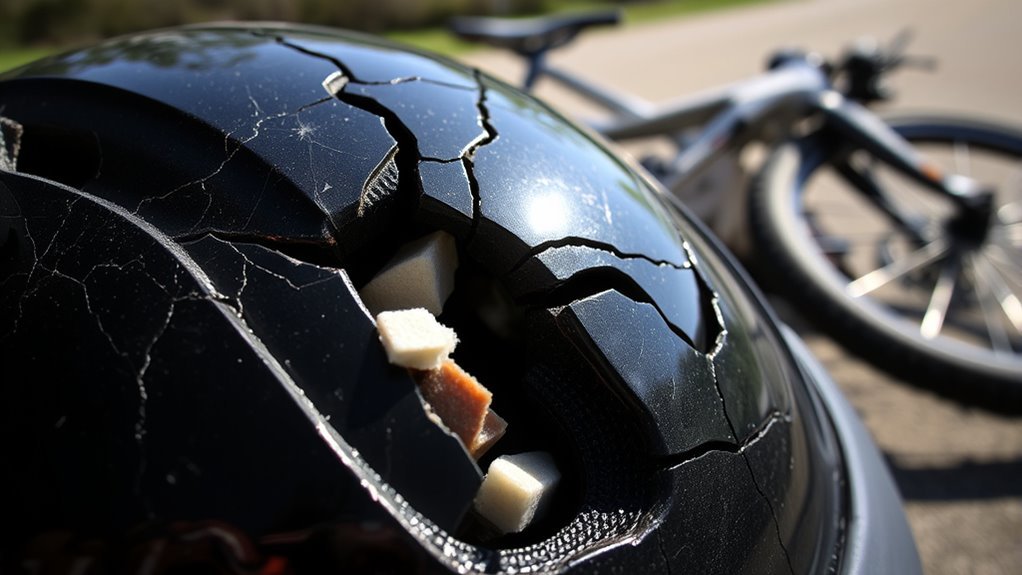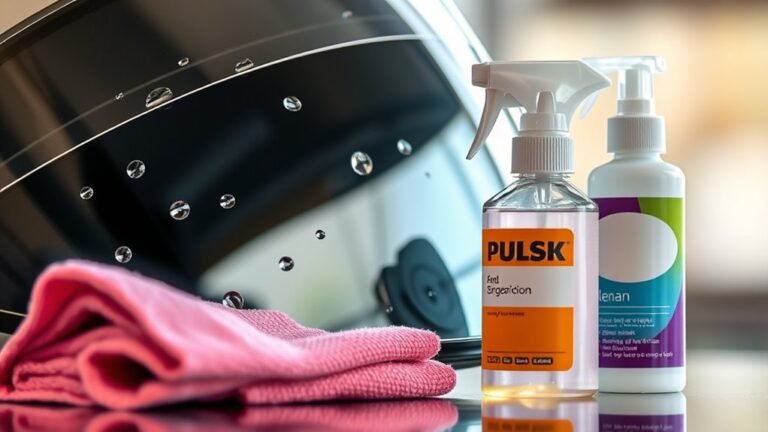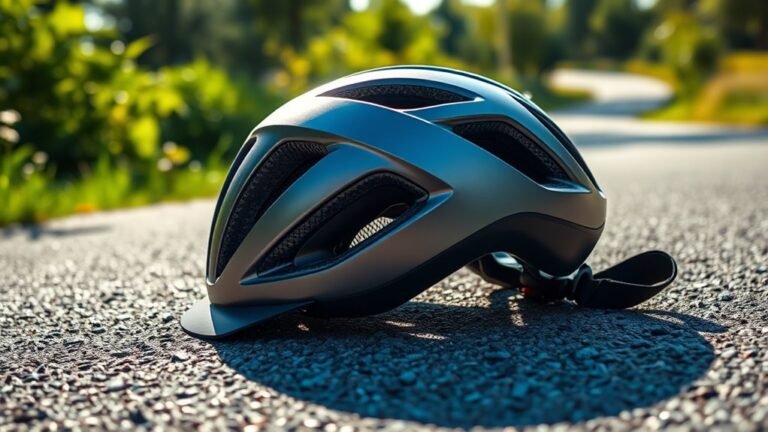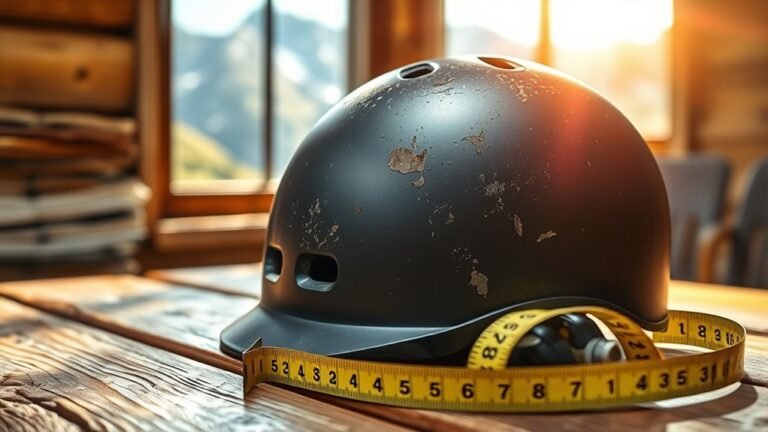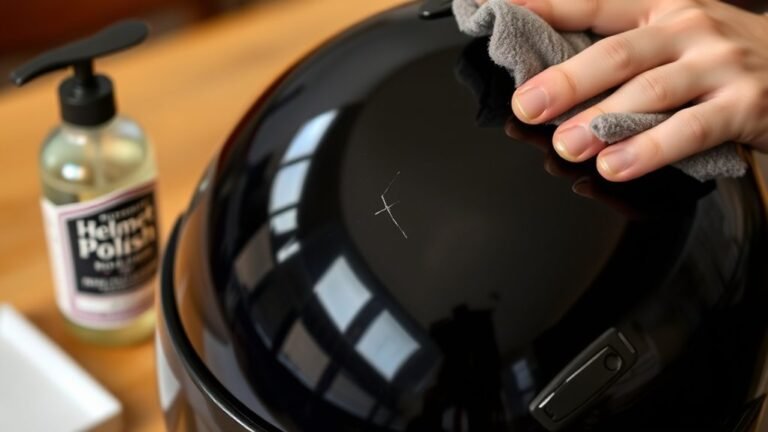Why You Must Replace Your Helmet After a Crash
You must replace your helmet after a crash because even minor impacts can compromise its ability to protect you. Cracks and dents weaken its structure, reducing its impact absorption capability. Wearing a damaged helmet puts you at a greater risk of serious injury in future accidents. It’s essential to prioritize your safety over the desire to keep using a compromised helmet. Discover more about proper helmet maintenance and other safety tips.
Understanding Helmet Structure and Function
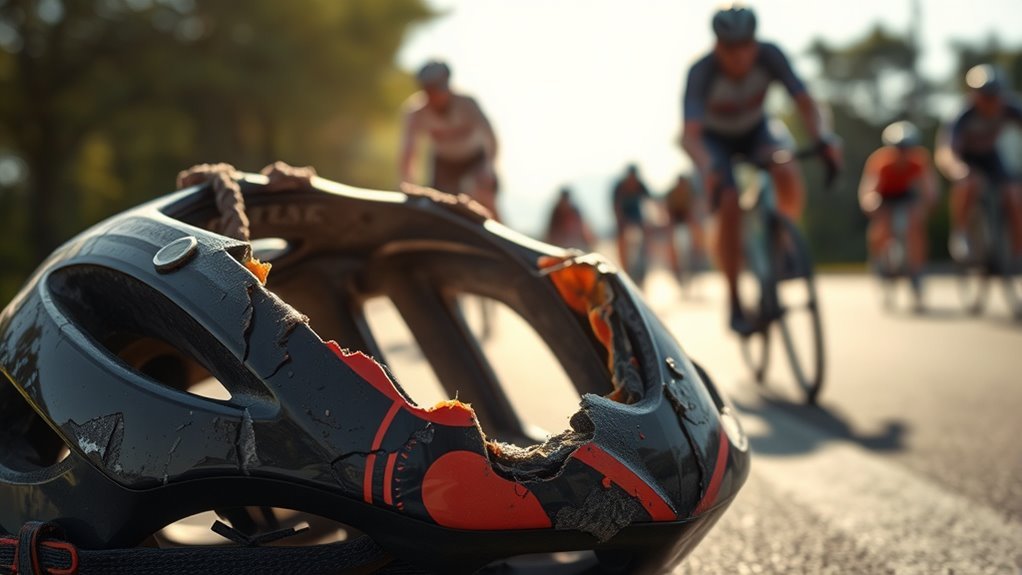
A helmet is an essential piece of safety equipment designed to protect your head during impacts. Understanding its structure and function is important for your safety. Most helmets are made from a combination of materials like polycarbonate, fiberglass, and expanded polystyrene, each selected for its strength and lightweight properties. The outer shell provides durability, while the inner foam layer is critical for impact absorption, dissipating force during a collision. This layered approach reduces the risk of serious injuries, allowing you the freedom to ride or engage in activities with confidence. Regularly checking the integrity of these materials guarantees ideal protection. Remember, a well-constructed helmet is your first line of defense against head injuries and should always be replaced after any significant impact.
Signs of Damage to Look For
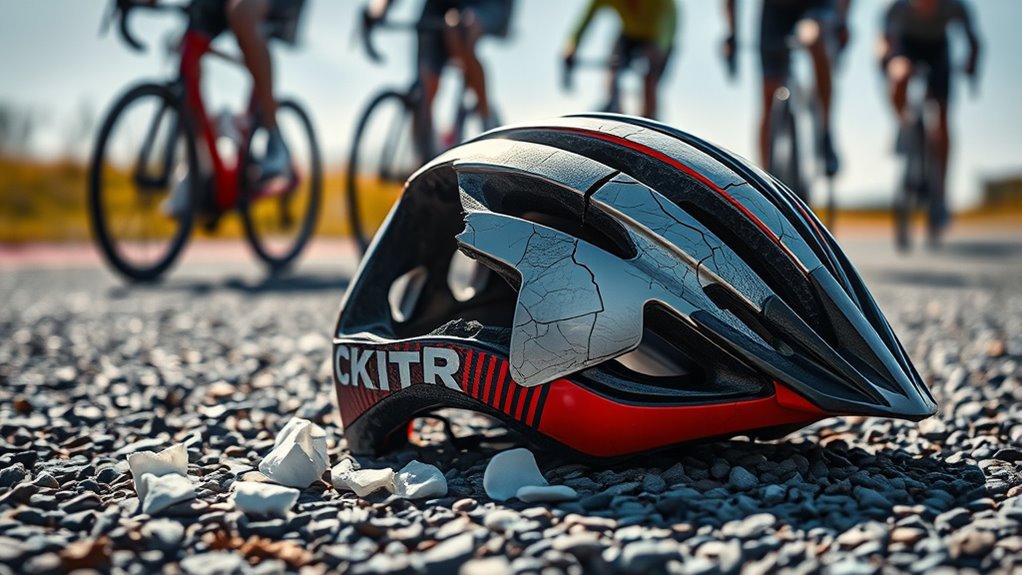
Identifying signs of damage on your helmet is essential for ensuring your safety. Start by inspecting for visible cracks on the outer shell; even small ones can compromise its integrity. If you see any damage, it’s a clear sign to replace your helmet. Next, check the interior foam. It should be intact and free from dents or compression marks. If the foam feels soft or shows signs of wear, it’s no longer effective at absorbing impact. Additionally, look for any deformations or unusual smells, which might indicate that the materials have degraded. Regular inspections of your helmet can help you maintain your safety and freedom while riding. Don’t take chances; prioritize your protection.
The Risks of Continuing to Use a Damaged Helmet

Continuing to wear a damaged helmet poses significant risks to your safety. A helmet’s primary function is impact absorption, and once it’s compromised, that capability diminishes drastically. Cracks, dents, or even worn-out foam can severely affect its ability to protect you during a crash. You might think you’re still safe, but the structural integrity of the helmet is at stake. If a collision occurs, the helmet may not absorb the impact effectively, increasing your risk of severe injury. Remember, your freedom to ride or engage in sports comes with the responsibility to protect yourself. Don’t gamble with your safety—replace that damaged helmet and guarantee you have reliable protection for your adventures ahead.
Guidelines for Helmet Replacement
Since safety should always be your top priority, knowing when to replace your helmet is essential. Helmets generally have a lifespan of about three to five years, depending on usage and storage conditions. After a crash, even a minor one, you should replace your helmet immediately, as it may not provide adequate protection afterward. Regularly inspect your helmet for any signs of wear or damage, and never ignore the manufacturer’s guidelines on replacement frequency. If you ride frequently, consider replacing your helmet more often to guarantee maximum safety. Remember, a helmet’s protection diminishes over time, so don’t compromise your well-being by holding onto an outdated or damaged helmet. Your freedom to ride safely starts with a reliable helmet.
Choosing the Right Helmet for Your Needs
After ensuring your helmet is up to standard post-crash and understanding when to replace it, the next step is selecting the right helmet that suits your specific riding needs. There are various helmet types, including full-face, open-face, and modular helmets, each catering to different riding styles and levels of protection. Consider your primary activity—whether it’s commuting, racing, or off-road riding—as this will influence your choice.
When trying on a helmet, adhere to fitting guidelines: it should fit snugly without pressure points, allowing minimal movement when you shake your head. Proper ventilation and weight are also essential for comfort. Ultimately, this choice enhances your safety while enjoying the freedom of the open road.
Frequently Asked Questions
Can I Repair My Helmet Instead of Replacing It?
You can’t effectively repair your helmet instead of replacing it. Helmet integrity is essential for your safety, and repair limitations mean that even minor damage can compromise its protective capabilities. Crashes can cause unseen structural changes that weaken the helmet, making it less effective in future impacts. For your freedom and well-being while riding, it’s best to invest in a new helmet to guarantee you’re fully protected on your adventures.
How Often Should I Replace My Helmet, Regardless of Crashes?
You should replace your helmet every 3 to 5 years, even if you haven’t been in a crash. Helmets have a lifespan due to wear and tear, environmental factors, and changing safety standards. Over time, the materials can degrade, compromising their protective capabilities. To guarantee your safety while enjoying your freedom, always check the manufacturer’s recommendations and stay informed about the latest safety standards to keep yourself protected on every ride.
What Types of Crashes Necessitate Helmet Replacement?
When you hit the pavement, your helmet’s like a protective shield, but not invincible. Any crash that results in impact damage, regardless of severity, demands a replacement. Even minor falls can compromise its integrity, leading to hidden fractures. If you experience a severe crash, it’s essential to swap out your helmet entirely, as the forces involved can create unseen damage. Keep riding free, but always prioritize your safety with a reliable helmet.
Are There Specific Brands Known for Better Durability?
Yes, there are specific brands known for better durability. When you’re considering helmet options, look at brand comparisons and durability ratings. Brands like Bell, Giro, and POC consistently receive high marks for their materials and construction. They often undergo rigorous testing, ensuring they can withstand impacts better than others. Always check user reviews for real-world durability experiences; it’s an essential factor in ensuring your helmet can keep you protected on your rides.
How Should I Properly Dispose of an Old Helmet?
To properly dispose of an old helmet, consider recycling options first. Many local bike shops or recycling centers accept helmets for materials recovery. If that’s not available, you can cut the straps and crush the shell to prevent reuse, then throw it in the trash. Always check for specific disposal methods in your area to guarantee you’re following local guidelines. This way, you’re contributing to a more sustainable environment while keeping safety in mind.
